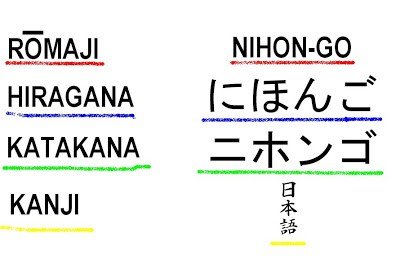For students of the Japanese language, it is important to know some peculiarities and characteristics of the Japanese language. Today we will analyze several points that you need to learn before studying Japanese, some little rules of readings and identifications.
Read also: Can I use Hiragana and Katakana in the same word?
Table of Content
Specificities in reading and pronunciation of the Japanese language
Of course, the understanding of this article may change depending on the language you are reading. Below are some rules for the Western alphabet:
- In Japanese, the pronunciation of [R] will always be the same, as in the word "caro." There is no [RR] in the Japanese language.
- The [H] does not have the silent sound as in English, it will be pronounced as [R], just like the English word “Hungry”;
- The [E] must be pronounced with a closed sound as in poems and where;
- The [W] is a semivowel with the sound equivalent to [U] while the [Y] has the sound equivalent to I.
- [S] is always a sibilant like [SS] and [Ç] in Portuguese;
- [J] has the sound of [DJ] as in adjective;
- [CH] has the sound of [tch] as in tchau.
- [SH] has the sound of [X] or [CH] as in Tea;
- [GE] and [GI] are pronounced [gue] and [gui];
- When we talk about words with two consonants like [Ittekimasu], between these two [T] a pause should be extended, lengthening the previous vowel;
- When a macron is found above the vowel as in the word [Okāsan], it signifies a long vowel and can be pronounced as [Okaasan].
If you want to delve deeper into the pronunciation of the Japanese language, you can watch our video below:
Read also: How to read Japanese? Does the pronunciation and speech change? basic rules
Peculiarities of Hiragana and Katakana
- The letter [つ] is pronounced [TSU] and does not exist in our Portuguese language.
- When the つ is small between letters, as in the word: [いってきます], it indicates a plosive sound;
- The symbol [ー] in Katakana also means an extension of the previous vowel.
- The small [やゆよ] are contracted sounds, like [Kya Kyu Kyo];
- Long vowels will be transcribed by duplicating the vowel, as in [おかあさん];
- In the Japanese alphabet, the syllable lines [ぎょう] follow the order A I U E O unlike Portuguese, which is A E I O U.
- The small Hiragana found above some words, mainly in karaoke or some books, the pronunciation of the kanji is known as furigana;

Other features of the Japanese language
- Currently, the Japanese language mixes a lot of English words.
- Japanese is a very formal language, you should speak it politely depending on the person;
- In Japanese, the plural or future tense is not used, as in English;
- A lot of special suffixes are used when saying people's names or some things;
- People's Names are usually the name of anything, fruits, objects, etc.;
- In Japanese there are thousands of the same words, so pay close attention to the context of the conversation;
- It does not have degrees of augmentative and diminutive, however, there are suffixes for that.
- There are thousands of ways of counting using;
- The nouns are invariable, or do not have distinct genders for masculine and feminine;
- A Word can have multiple meanings, and using the same kanji script;
- The Japanese language uses the SOV system where the verb always goes at the end of the sentence.
- Japanese has a formal and informal language, with different hierarchical levels;
